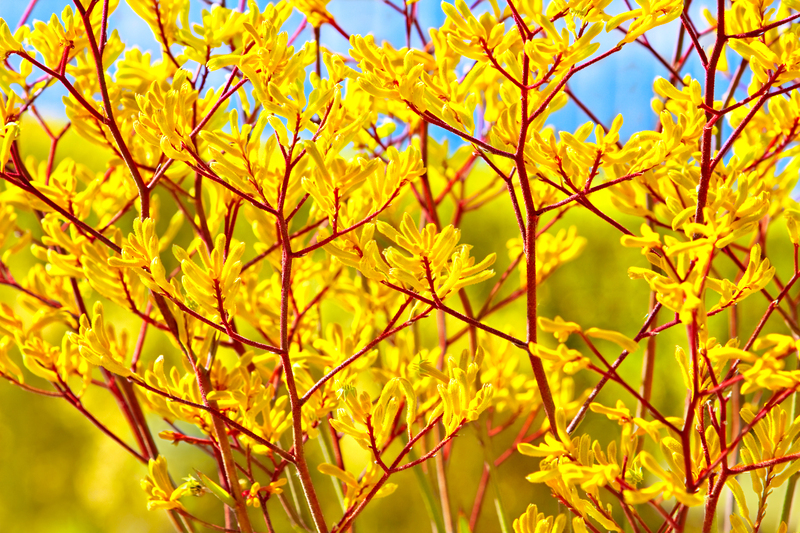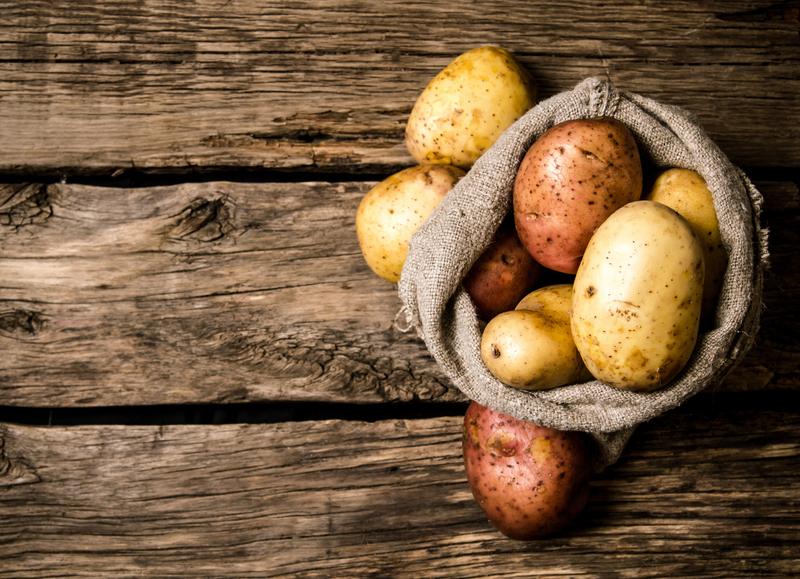Stay Green This Summer: Strategies for Drought-Proof Lawns
Summer can wreak havoc on your carefully manicured green space, especially during periods of drought. With climate change contributing to unpredictable weather patterns, keeping your lawn lush and vibrant can seem daunting. However, employing effective strategies for drought-resistant lawns not only saves water but also ensures your yard remains a source of pride all season long.
Understanding Drought-Stress in Lawns
Drought stress occurs when your lawn receives insufficient water for extended periods, leading to brown patches, thinning turf, and vulnerable grass. Before diving into solutions, it's crucial to understand how and why drought affects your yard. Warm summer temperatures, increased evaporation, and water restrictions all contribute to shrinking moisture in the soil, leaving grassroots parched.
Key Signs Your Lawn is Suffering from Drought
- Footprints or mower tracks remain visible in the grass
- Grass blades fold or curl inward
- Color changes from green to bluish-gray or tan
- Slow growth despite normal maintenance

Choosing the Right Grass for Drought-Proof Lawns
One of the most effective strategies for maintaining a green lawn during drought is selecting the right grass species. Some varieties are naturally better adapted to resist drought, bounce back after water shortages, and require less maintenance than traditional types.
Top Drought-Tolerant Grass Types
- Bermuda Grass: Excellent heat tolerance and deep root systems.
- Zoysia Grass: Dense, tough turf that thrives with minimal water.
- Buffalo Grass: A native grass highly resilient to drought and low-maintenance.
- Tall Fescue: Known for its deep roots that seek out moisture below the surface.
- St. Augustine Grass: Suitable for warm, coastal conditions where drought is common.
*Before seeding, consult with local nurseries to find the best drought-proof grass for your geographic region.*
Soil Preparation: The Foundation of Drought-Resistant Lawns
The health of your lawn depends heavily on soil composition. Poor soil leads to poor water retention, sending precious moisture deeper than grassroots can reach. Enhancing your soil improves water-holding capacity, encourages deep root growth, and builds a robust base for a thriving summer lawn.
Soil Improvement Tips
- Aerate at least once a year to break up compaction and allow water to penetrate deeper.
- Incorporate organic matter like compost or well-rotted manure to increase water retention.
- Test pH--neutral to slightly acidic soil (pH 6.0-7.0) supports most drought-resistant lawns.
- Add mulch around the lawn's edges or garden beds to retain moisture.
Smart Watering Strategies for Drought-Resilient Lawns
Watering wisely is essential for maintaining a lush lawn through the driest months. Overwatering wastes resources, while underwatering leaves your lawn vulnerable. The goal? Train your grass roots to grow deep, tapping into moisture deep in the soil and creating true drought resilience.
Efficient Irrigation Techniques
- Water Early: Irrigate before sunrise to minimize evaporation and fungal growth.
- Deep, Infrequent Watering: Apply 1 inch of water once or twice per week instead of shallow daily watering.
- Monitor Your Sprinklers: Fix leaks, adjust heads, and avoid watering sidewalks or driveways.
- Install Drip Irrigation: Directs water precisely to grass roots and reduces waste.
- Use Rain Sensors: Modern irrigation systems can skip watering cycles during rainfall.
Bonus Tip:
Set a rain gauge in your yard to measure how much water your lawn receives from both rain and your irrigation system.
Seasonal Lawn Maintenance for Thriving Drought-Proof Yards
Optimal maintenance helps your lawn weather harsh summer conditions. Smart mowing, proper fertilization, and minimal disturbance create a strong, self-sustaining landscape that uses less water and remains green for longer.
Mowing Techniques for Drought Stress
- Raise the Mower Blade: Never cut more than 1/3 of the grass height. Taller grass shades roots and retains moisture.
- Keep Blades Sharp: Dull blades tear grass, increasing water loss and vulnerability.
- Leave Clippings: Grass clippings return nutrients and retain soil moisture as mulch.
Fertilization and Weed Control
- Fertilize Lightly: Heavy fertilization stimulates growth that can't be supported in drought. Use slow-release, eco-friendly fertilizers designed for drought-tolerant species.
- Remove Weeds Promptly: Weeds compete for moisture; a weed-free lawn stays greener with less effort.
Innovative Water-Saving Lawn Alternatives
If you're committed to sustainability or live in areas with frequent droughts, consider drought-proof lawn alternatives. These options use less water and are easier to maintain, while still providing a beautiful outdoor living area.
Low-Water Landscaping Ideas
- Clover Lawns: Clover requires less water, fixes nitrogen in the soil, and stays green through drought.
- Artificial Turf: Provides a year-round verdant look with zero water use (choose high-quality, non-toxic options).
- Xeriscaping: Incorporate native plants, rocks, and mulch beds to dramatically cut water usage.
- Ground Covers: Species like creeping thyme or sedum offer beautiful, low-maintenance alternatives to traditional grass.
Check with your municipality for rebates and incentives for converting to sustainable landscaping.
Building Healthy Lawn Habits During Drought
Adapting your routine is key during drought periods. Aim to support your lawn's natural cycle rather than force aggressive growth. Sometimes, a drought-tolerant lawn will go partially dormant and still bounce back once normal conditions resume.
Best Practices for Summer Lawn Survival
- Minimize Foot Traffic: Limit yard activity to avoid compacting parched soil.
- Delay Heavy Projects: Hold off on aeration, fertilization, or seeding during active drought.
- Monitor for Pests: Stressed lawns are more susceptible to infestations. Treat if necessary with gentle, environmentally-friendly options.
- Embrace Dormancy: Most cool-season grasses naturally go dormant in heat and drought. Don't force green color; let nature take its course.
Rainwater Harvesting and Conservation Tips
Supplementing your irrigation with captured rainwater is a sustainable and cost-effective way to protect your lawn from drought stress. Even small collections help cut your water bills and keep your lawn drought-ready.
Ideas to Maximize Every Drop
- Install Rain Barrels: Direct downspouts into barrels for easy access to supplemental irrigation water.
- Use Permeable Paving: Paths and patios let water reach your soil rather than run off into the streets.
- Group Plants with Similar Needs: Create zones in your landscape so that drought-tolerant and water-loving plants receive appropriate care.
- Apply Mulch Generously: A thick mulch layer conserves water and cools soil, reducing evaporation.
Frequently Asked Questions About Drought-Proof Lawns
Can I revive a totally brown lawn during severe drought?
In most cases, brown, dormant grass is not dead--it's simply in survival mode and can bounce back with adequate water and attention. However, if your lawn was unhealthy before the drought, recovery will be harder. Focus on soil improvement and reseeding with drought-tolerant varieties if needed.
How often should I fertilize a drought-resistant lawn?
Fertilize lightly, no more than once in spring and fall, using slow-release or organic fertilizers. Over-fertilization weakens your turf and can cause damage during drought.
Is mowing during drought bad for my lawn?
It's safe if done correctly. Never mow during peak heat, keep the blades sharp, and never cut grass too short. Tall grass helps shade the roots and retain essential moisture.

The Environmental Advantages of Drought-Proof Lawns
Adopting drought-proof lawn strategies isn't just about personal benefit; it's a responsible environmental choice. Reducing outdoor water consumption eases the burden on local reserves, decreases runoff, and supports biodiversity by encouraging native grasses and plants that thrive with minimal intervention.
Stay Green and Sustainable: What's Next?
Creating a drought-resilient lawn takes patience and planning, but the rewards last for years. By choosing the right grass, improving your soil, watering wisely, and exploring innovative landscaping alternatives, you can maintain a stunning, water-wise lawn that stays green even during the harshest summers.
Start implementing these drought-proof strategies today and enjoy a lush, vibrant yard that's both eco-friendly and beautiful--even when the temperature soars!